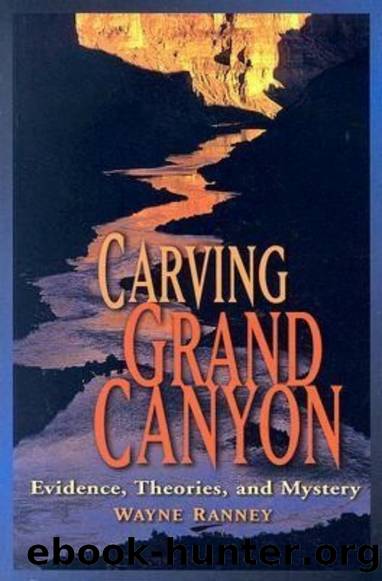Carving Grand Canyon: Evidence, Theories, and Mystery by Wayne Ranney

Author:Wayne Ranney [Ranney, Wayne]
Language: eng
Format: epub
ISBN: 9781934656365
Google: FPmXpwAACAAJ
Amazon: B00BJC59HC
Goodreads: 18888433
Publisher: Grand Canyon Association
Published: 2012-09-30T21:00:00+00:00
A Young Colorado River
Ivo Lucchitta, 1972
© RAEchel Running.com
Dr. Eddie McKee recruited two doctoral candidates to study the geology of the southwestern Colorado Plateau where it adjoins the Basin and Range. The two students, Ivo Lucchitta and Dick Young, presented the results of their work at the 1964 MNA symposium; these results may have been the driving impetus for Eddie McKee to call for the symposium since the new evidence spoke loudly to the origin of the Colorado River in Grand Canyon. Lucchitta studied the Muddy Creek Formation at the base of the Grand Wash Cliffs and went on to a stellar career revolving around the Grand Canyon and the southern Basin and Range. During the 1970s and 1980s, he became an articulate spokesperson for the evolution of the Colorado River in Grand Canyon.
His take on the Coloradoâs history was firmly planted in the âyoung riverâ camp, and he has been a vocal proponent of river integration through headward erosion and stream piracy. Lucchittaâs conclusions mirror those of Longwell: he agreed that the Muddy Creek Formation contains no Colorado River sediment and that this supports the idea that the river and canyon must be younger than 6 million years. Lucchitta also revived the earlier proposal of Babenroth and Strahler, who theorized that the Colorado River established its course across the Kaibab upwarp in a subsequent valley between the diving nose of the upwarp on the north and a cliff of retreating Mesozoic formations on the south. Lucchitta called this the âracetrack theory,â since the shape of the subsequent valley mimics a racetrack confined between the grandstand wall and the infield of a racing track (see illustration on page 74). He said this drainage flowed northwest away from the Grand Canyon area after leaving the area of the Kaibab upwarp to the west. He proposed that headward erosion by the Hualapai drainage captured the ancestral upper Colorado River near Kanab Creek west of the Kaibab upwarp. This was a variation on the findings from the 1964 symposium, which stated that stream capture occurred east of the upwarp, near the confluence of the Colorado and Little Colorado Rivers. Lucchitta also became involved with discussions regarding the origin of the Bouse Formation, which will be discussed later.
Northeast Drainage
Richard Young, 1978
Download
This site does not store any files on its server. We only index and link to content provided by other sites. Please contact the content providers to delete copyright contents if any and email us, we'll remove relevant links or contents immediately.
| General | Grand Canyon |
| Phoenix | Tucson |
Giovanni's Room by James Baldwin(7199)
The Plant Paradox by Dr. Steven R. Gundry M.D(2548)
The Stranger in the Woods by Michael Finkel(2458)
Miami by Joan Didion(2327)
Wild: From Lost to Found on the Pacific Crest Trail by Cheryl Strayed(2215)
INTO THE WILD by Jon Krakauer(2158)
DK Eyewitness Top 10 Travel Guides Orlando by DK(2131)
Trail Magic by Trevelyan Quest Edwards & Hazel Edwards(2127)
Vacationland by John Hodgman(2093)
The Twilight Saga Collection by Stephenie Meyer(2087)
Nomadland by Jessica Bruder(2016)
Birds of the Pacific Northwest by Shewey John; Blount Tim;(1926)
The Last Flight by Julie Clark(1911)
Portland: Including the Coast, Mounts Hood and St. Helens, and the Santiam River by Paul Gerald(1885)
On Trails by Robert Moor(1854)
Deep South by Paul Theroux(1787)
Blue Highways by William Least Heat-Moon(1723)
Trees and Shrubs of the Pacific Northwest by Mark Turner(1682)
1,000 Places to See in the United States and Canada Before You Die (1,000 Places to See in the United States & Canada Before You) by Patricia Schultz(1609)
